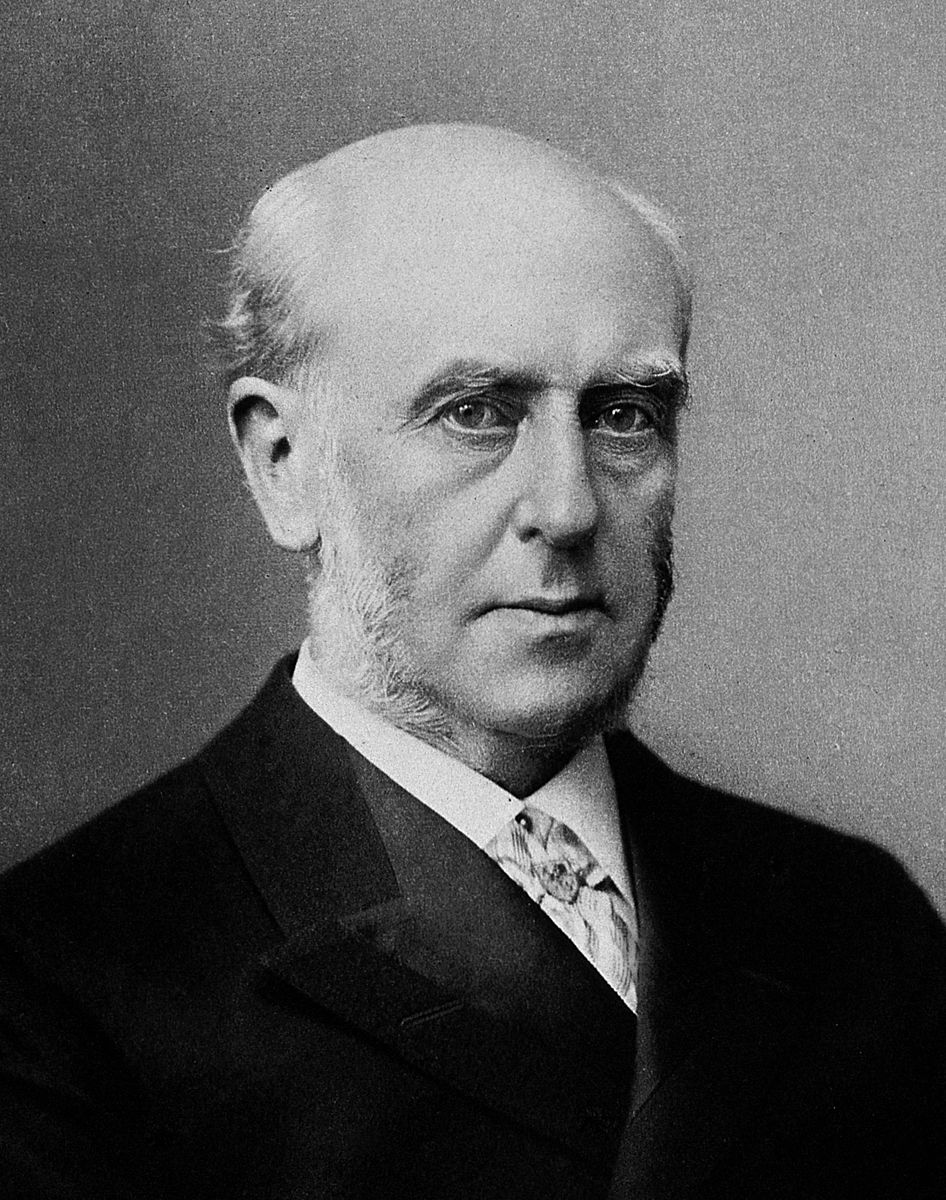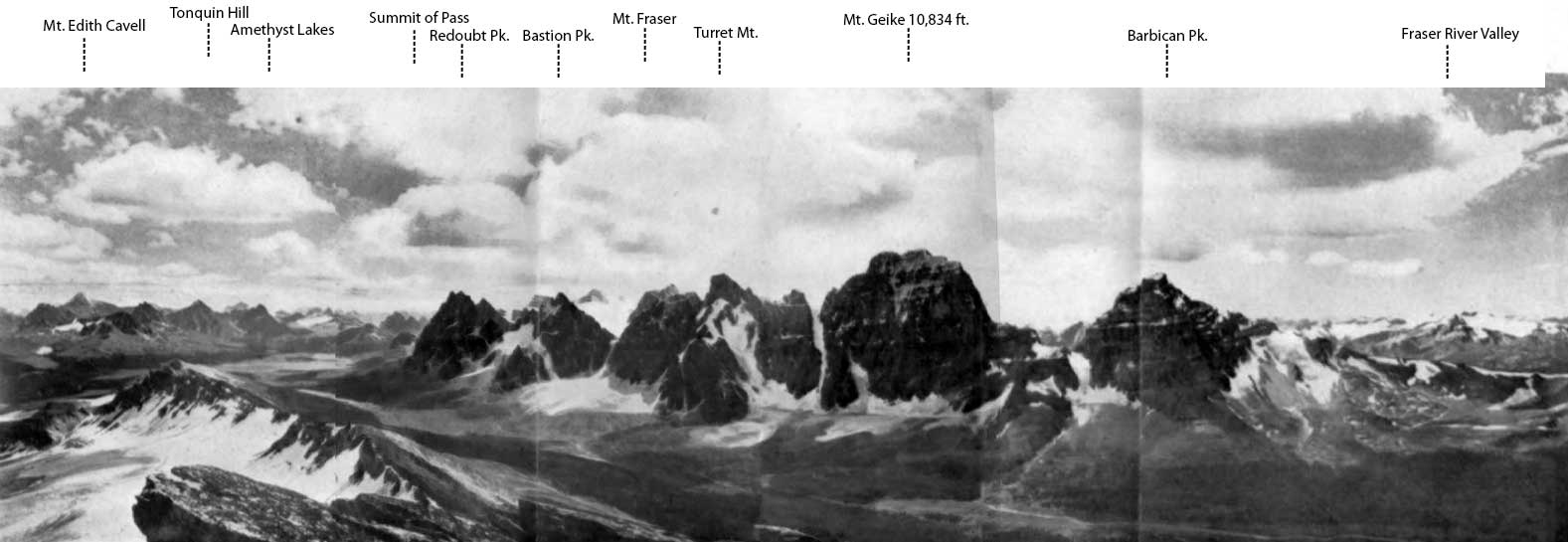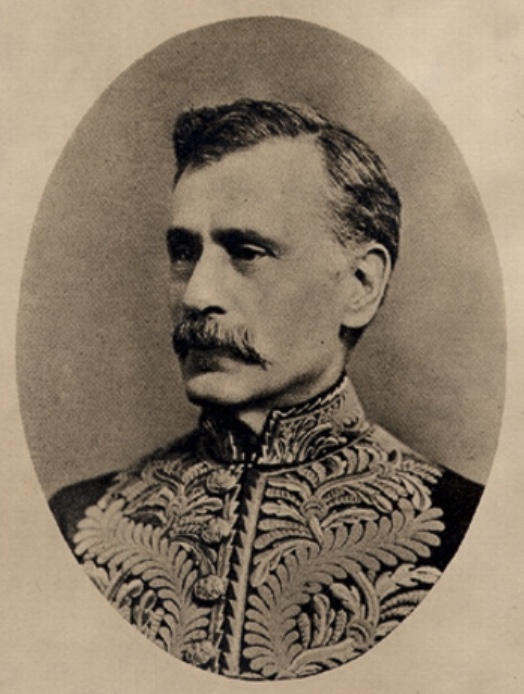E side of Ice River at the SE end of Yoho National Park, E
51.2067 N 116.4044 W — Map 082N01 — Google — GeoHack — Bivouac
Official in BC – Canada
Elevation: 3524 m

Graham in 1922
Wikipedia
Politician George Perry Graham [1859–1943] was born in Eganville, Ontario. He became a member of the Ontario Legislature in 1898, and served there until 1907, when he was elected to the House of Commons. He was appointed Minister of Railways and Canals, and became Minister of Militia Defence and Minister of Naval Service in 1922. In 1925 he was appointed to His Majesty’s Privy Council and in 1926 to the Canadian senate.
This feature was personally selected in 1934 by the Honorable T. D. Pattulo, Premier of British Columbia, “… to be named Mount George Graham after Colonel the Right Honorable George Perry Graham, PC, LLD.”

Sir Archibald Geikie
Cassell’s Universal Portrait Gallery

Tonquin Pass and Geikie Range from the North (Vista Peak).
Photo, A.0. Wheeler
Canadian Alpine Journal1922
“The kingpin of the famous Tonquin Valley” was named in 1898 by geologist James McEvoy [1862–1935] after Sir Archibald Geikie [1835–1924], the Scottish geologist who was director-general of the Geological Survey of Great Britain from 1882 to 1901.
The name was officially adopted in 1924 as labelled on the 1912 topographic map Mount Robson 1912 by Arthur Oliver Wheeler [1860–1945].
Alpinist Arnold Louis Mumm [1859–1927] said that the north face of Mount Geikie was composed of the most tremendous precipices he had ever seen.
In 1913 certain striking peaks immediately south of Yellowhead Pass were located and measured by Wheeler from a station on Yellowhead Mountain. Mt. Geikie (11,016 ft.) on the continental divide was reported upon by him as a “magnificent first climb in store for some enterprising mountaineer and one that would challenge the highest skill and perseverance,” and so its fame went forth. Unfortunately that name has been locally applied to another peak visible from the railway at Jasper station. It was this latter “Geikie” [identified in a note as “Mt. Fitzhugh,” renamed Mount Edith Cavell in 1916] which became the goal of Mr. Mumm in 1914, when making his fifth visit to these parts with his faithful Inderbinnen.
— Fay 1915

Comprising Bennington Peak, McDonnell Peak, and Simon Peak, the mountain honors Simon Fraser [1776–1862].

Portrait of Amédée Emmanuel Forget (1847-1923)
Wikipedia
Amedée E. Forget [1847–1923] of Banff, Alberta, was Lieutenant Governor of the Northwest Territories from 1898 to 1905, and senator from 1911 to 1923. “Senator Forget and Mrs. Forget are in the old Bell-Irving house on Beaver Avenue,” said a Banff newspaper report in 1911, “while the Senator is having his lot at the corner of Buffalo and Muskrat cleared to build a summer bungalow. The Senator intends making Banff his summer home and Ottawa his winter residence.”
The highest mountain in Alberta. It takes its name from the Columbia River. In 1872, Robert Gray, an American sea captain, discovered the river’s mouth, between present-day Washington and Oregon, and named it after his ship, “Columbia.”
In 1892 Arthur Philemon Coleman [1852–1939] called this peak Pyramid Mountain. The current name was bestowed in 1919 by the Alberta-British Columbia Boundary Commission .